Column One: Bob Hope house in Palm Springs, long an architectural footnote, approaches masterpiece status

- Share via
For decades, this city has been known for its high-low mix of desert culture, exemplified by the offerings on East Palm Canyon Drive, a well-traveled road with views of the craggy brown hills to the south.
Discreet signs alert drivers to country clubs and golf resorts that are just a few blocks away from a string of consignment stores, luxury car dealerships, supermarkets — and a 1950s trailer park with streets named after planets and stars — Venus, Mars, Rigel, Vega.
Just past the turnoff for the Horizon Mobile Village and RV Park, there’s no evidence of a multimillion-dollar project that will attract worldwide attention upon its completion. But up the hill and past the guard station on Southridge Drive, Palm Springs’ most exclusive hillside neighborhood has been rumbling with the sound of power tools and construction trucks for well over a year, as more than a hundred craftsmen from across the Coachella Valley have worked to bring the city’s most famous house back to life.
Starchitecture groupies may refer to it as a John Lautner house, in reference to the celebrated Los Angeles architect who designed it, but locally it’s known to many as the Bob Hope house, a circular 24,000-square-foot residence built 40-plus years ago for the entertainer and his family.
Many observers have said the structure, with its sweeping, gravity-defying roof and 60-foot-wide oculus, looks like a spaceship parked on a rugged hill — and when Hope first saw Lautner’s architectural model, he quipped: “Well, at least when they come down from Mars they’ll know where to go.”
If only the actual task of building the house was filled with that much levity.
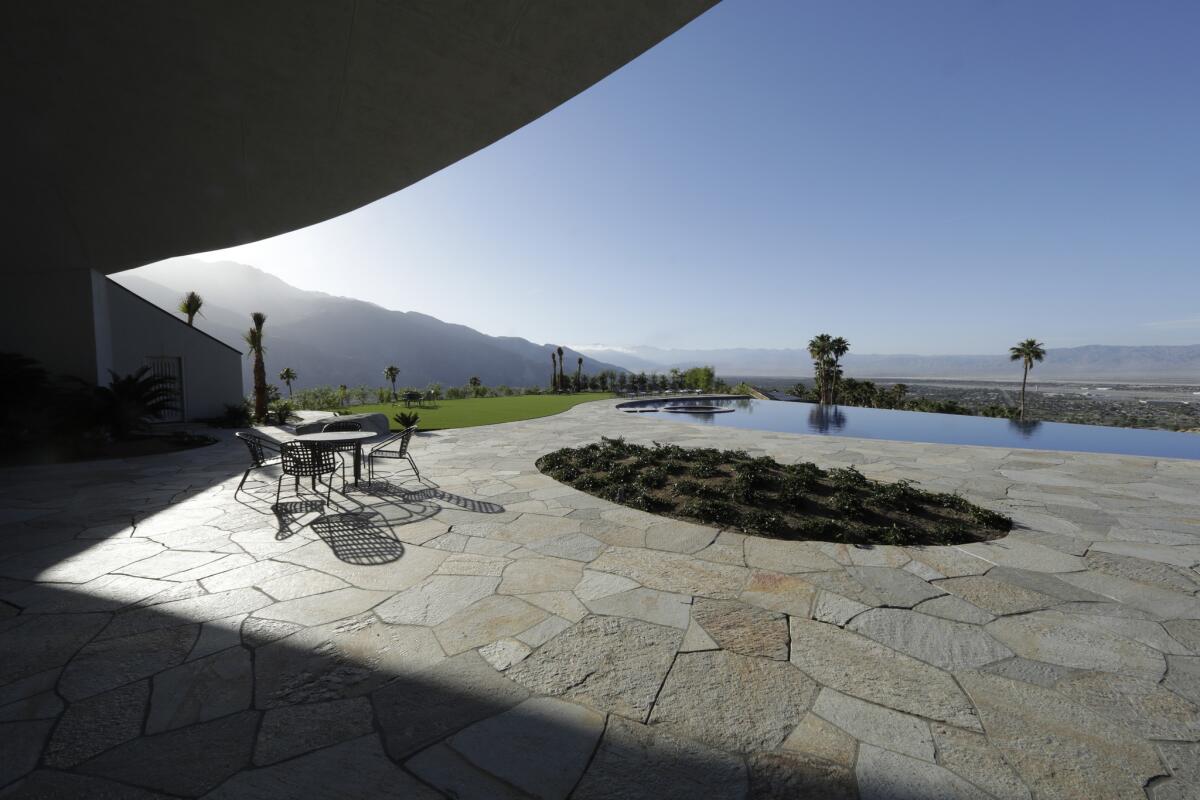
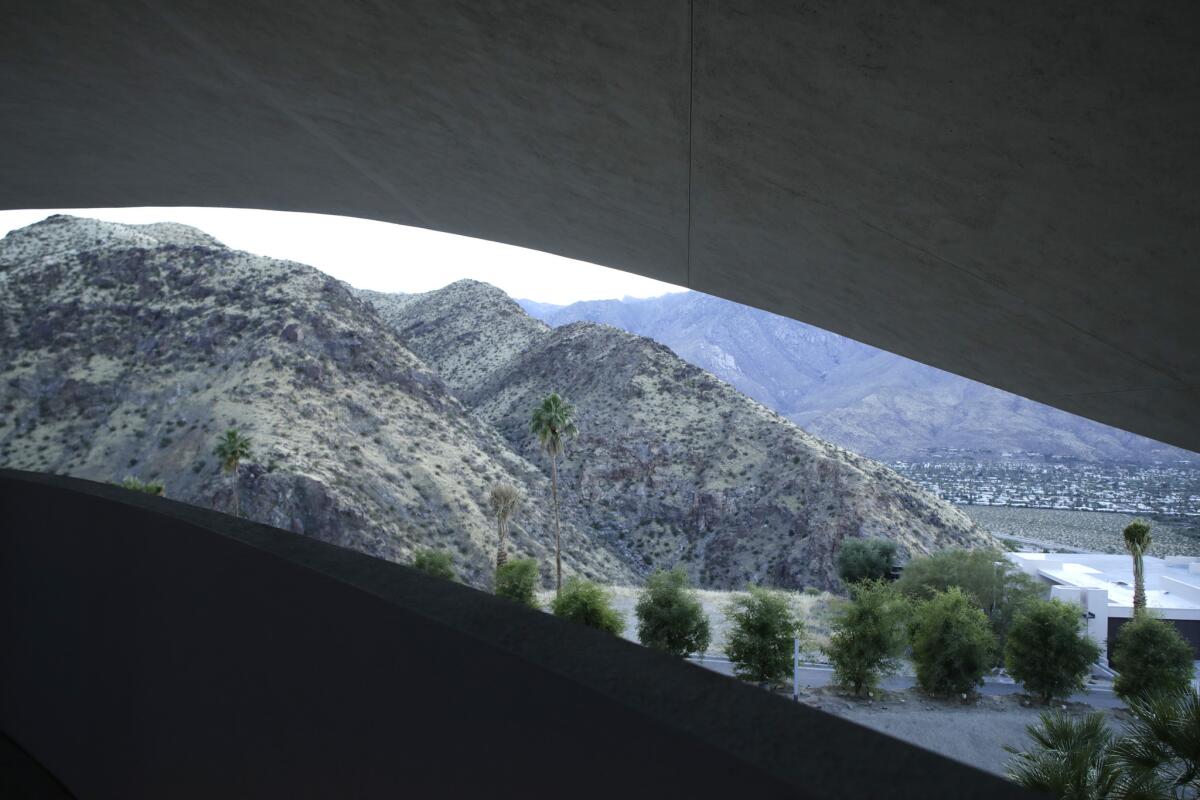
Lautner envisioned a residence that blended in with the surrounding rocky landscape. The interior design would be defined by the extraordinary play of desert light throughout the home — and the breathtaking views of the desert and the mountains.
Bob and Dolores Hope had other ideas.
They were Hollywood royalty and wanted a home to reflect that status. Eventually, they hired a Beverly Hills society decorator (who worked for the shah of Iran’s sister) to do the interiors. When the house was completed in 1980, Lautner walked away dismayed. The desert residence was considered as a footnote, rather than a highlight, in a distinguished career.
Until now. Thanks to the deep pockets of venture capitalist Ron Burkle, the house is being remade to reflect the architect’s original vision. Lautner protégé Helena Arahuete, who worked with him for 23 years, has stripped the interiors and rebuilt the inside with natural materials. Swan faucets, wallpaper and carpet are out. Quartzite flooring, African mahogany and Brazilian granite are in — as is the shape-shifting light that transforms the house during the course of the day.
With the project now in its final stages, the house is almost ready for its relaunch.
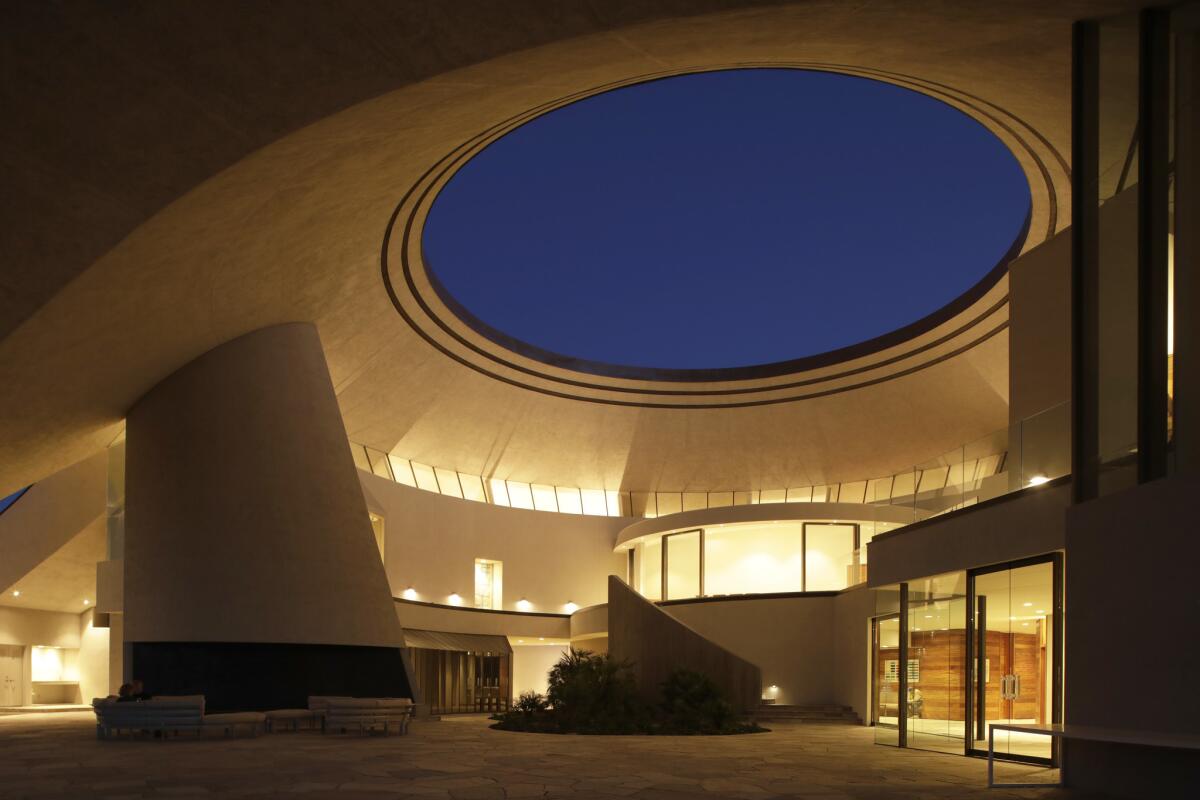
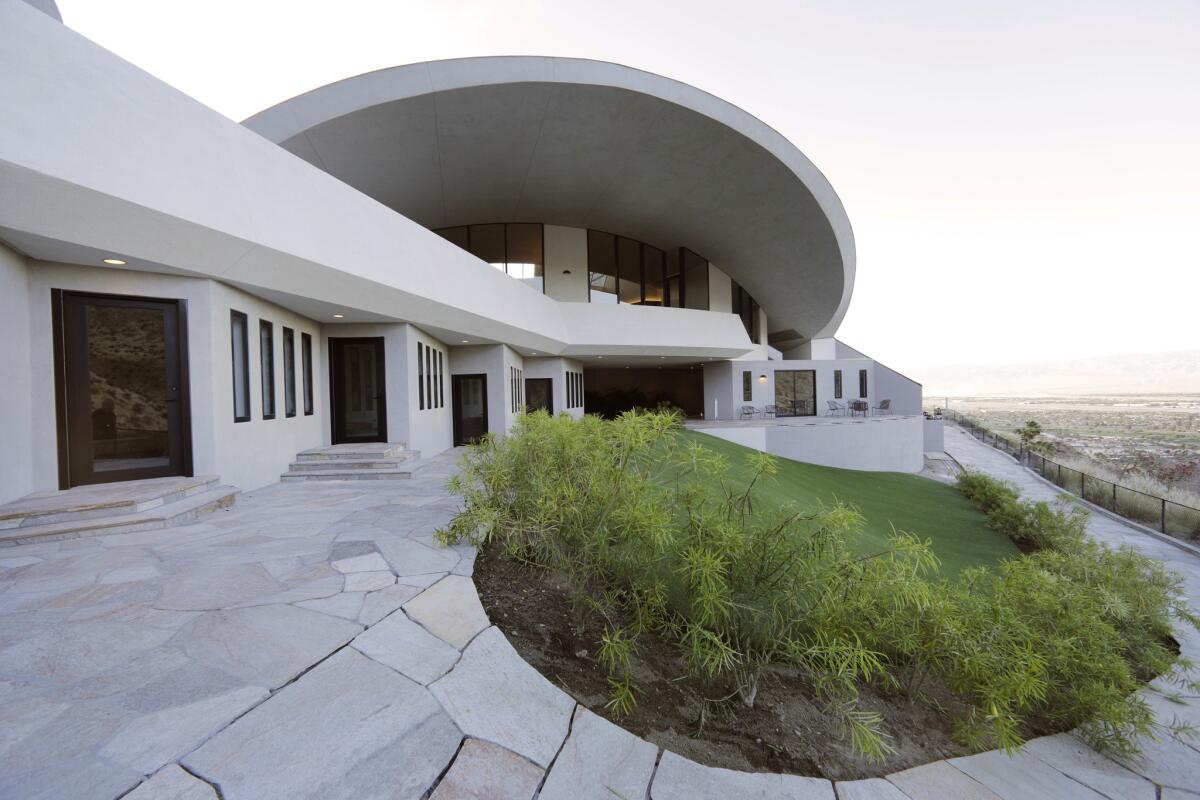
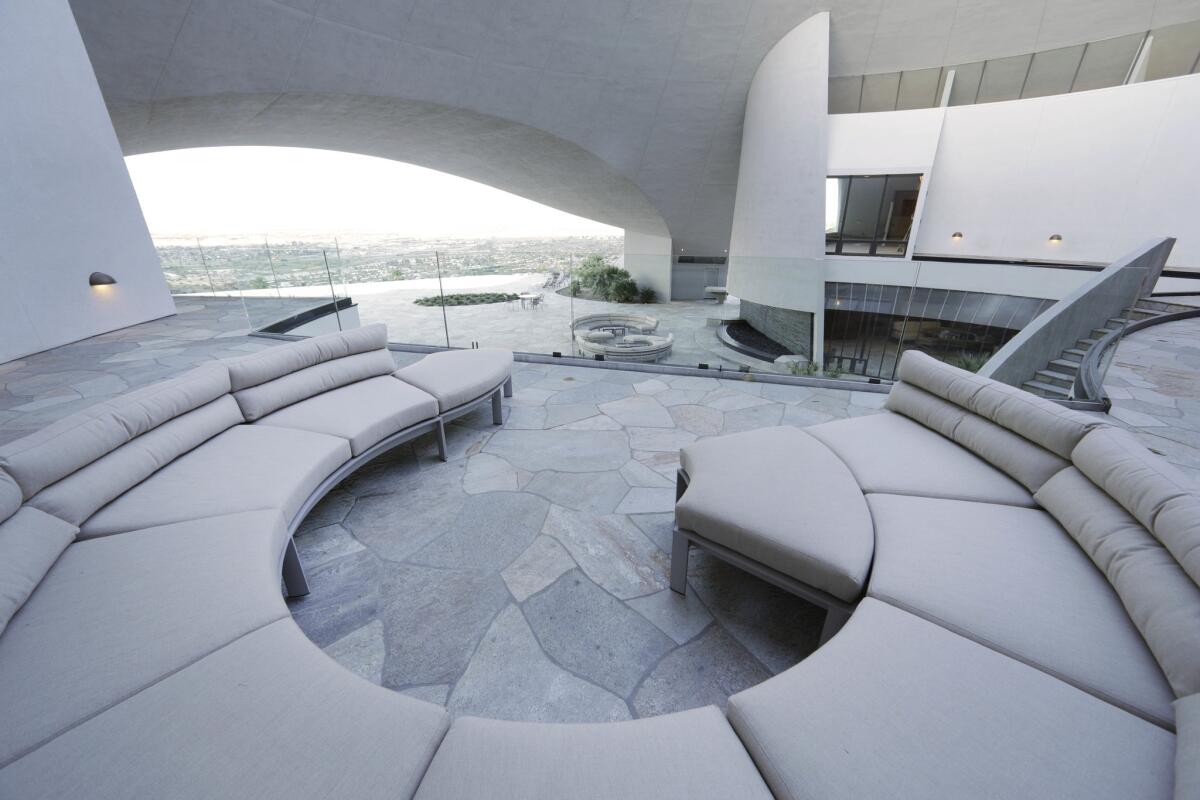
With her bright blue eyes and gray hair, Arahuete is known, affectionately, as “La Señora” at the work site. On a recent evening, as the sun set behind the San Jacinto Mountains, she recalled the genesis of the Hope estate and assessed the progress of the renovation.
The Hopes hired Lautner in 1969, in part because they admired the circular house he had built for Palm Springs’ star interior designer Arthur Elrod, just down the street on Southridge Drive. But in 1973, just as construction was getting underway, a spark from a welder's torch set the roof’s wood sheathing on fire. The entire structure burned down in 15 minutes, and the project was stalled for five years while the Hopes fought a court battle with the contractor.
‘Well, at least when they come down from Mars they’ll know where to go.’
— Bob Hope, when he first saw John Lautner’s model of the home
During that time, Elrod — a master of midcentury design who was set to do the interiors of the Hope house with Lautner — was killed along with an associate in a car accident in Palm Springs.
“He was a very good designer,” Arahuete said. “Had he not died, the house would have been totally different, I'm sure.”
Dolores Hope wanted an ultra-glamorous interior suitable for Hollywood-style entertaining and golf tournament after-parties. Without Elrod there to mediate, “she wanted everything very ornamented, very rich — you know, gold and pink and black and mirrors everywhere,” Arahuete said.
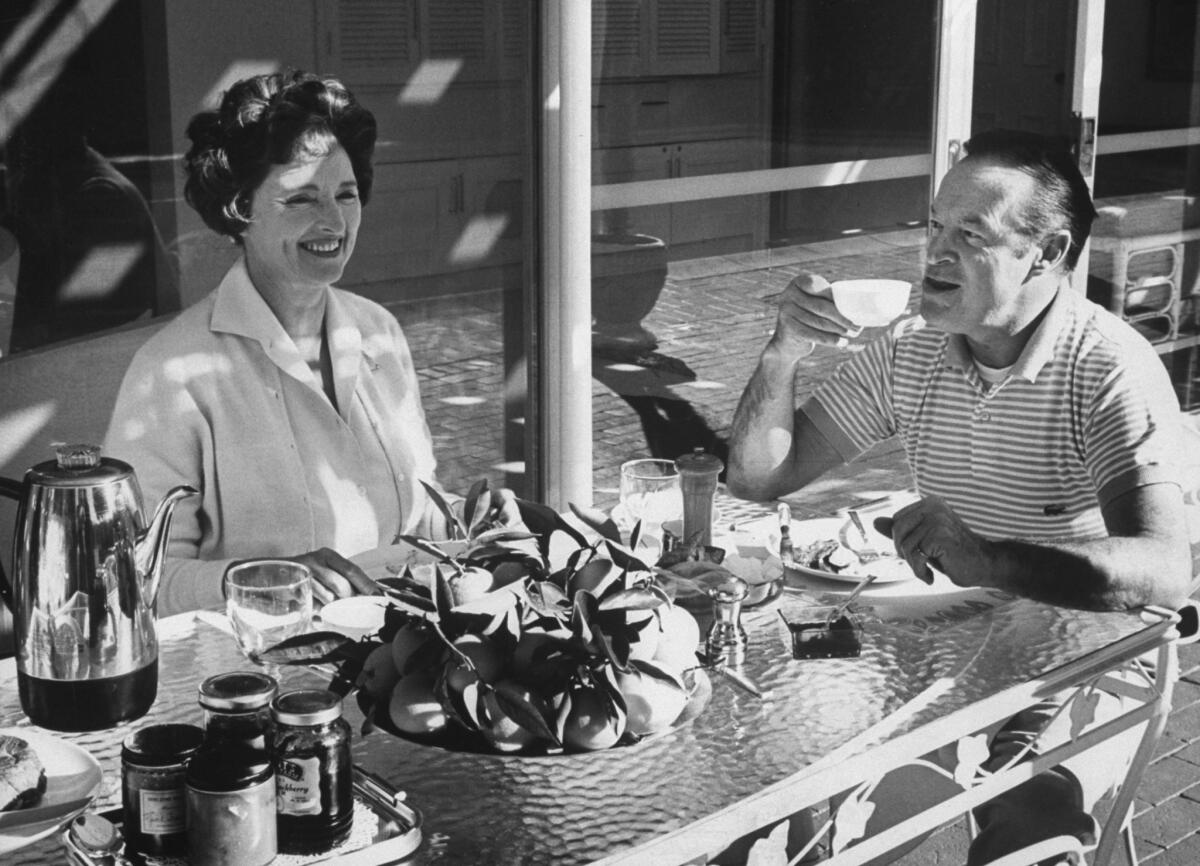
Deeply influenced by her friends Walter and Leonore Annenberg — who owned the pink-roofed Sunnylands estate in Rancho Mirage — Dolores requested that the mushroom-shaped roof on her house be covered in terracotta pink gunite instead of the brown metal that Lautner envisioned.
Lautner complied with the request. But he and Arahuete, who was the site architect on the Hope project at the time, were deeply disappointed. Lautner rarely complained about clients, but he later told a documentarian that the Hope project “was an ugly, tough job.”
9 things you should know about the Bob Hope house in Palm Springs — and its restoration »
Lautner had spent his career creating striking domestic architecture across the world, including the UFO-shaped Chemosphere house in the Hollywood Hills off Mulholland Drive. But for years after its completion, the 10-bedroom Hope house was barely mentioned in admiring appraisals of the architect, who had developed his signature “organic modernism” as one of Frank Lloyd Wright’s star students. When the Hope house was mentioned at all by scholars or critics, it was usually with a sigh of perplexed disappointment.
With Arahuete leading the renovation, alongside project manager and longtime art and design consultant Tim Gleason, Burkle's team believes the house, when completed, will finally be counted among Lautner’s most stunning architectural masterpieces.
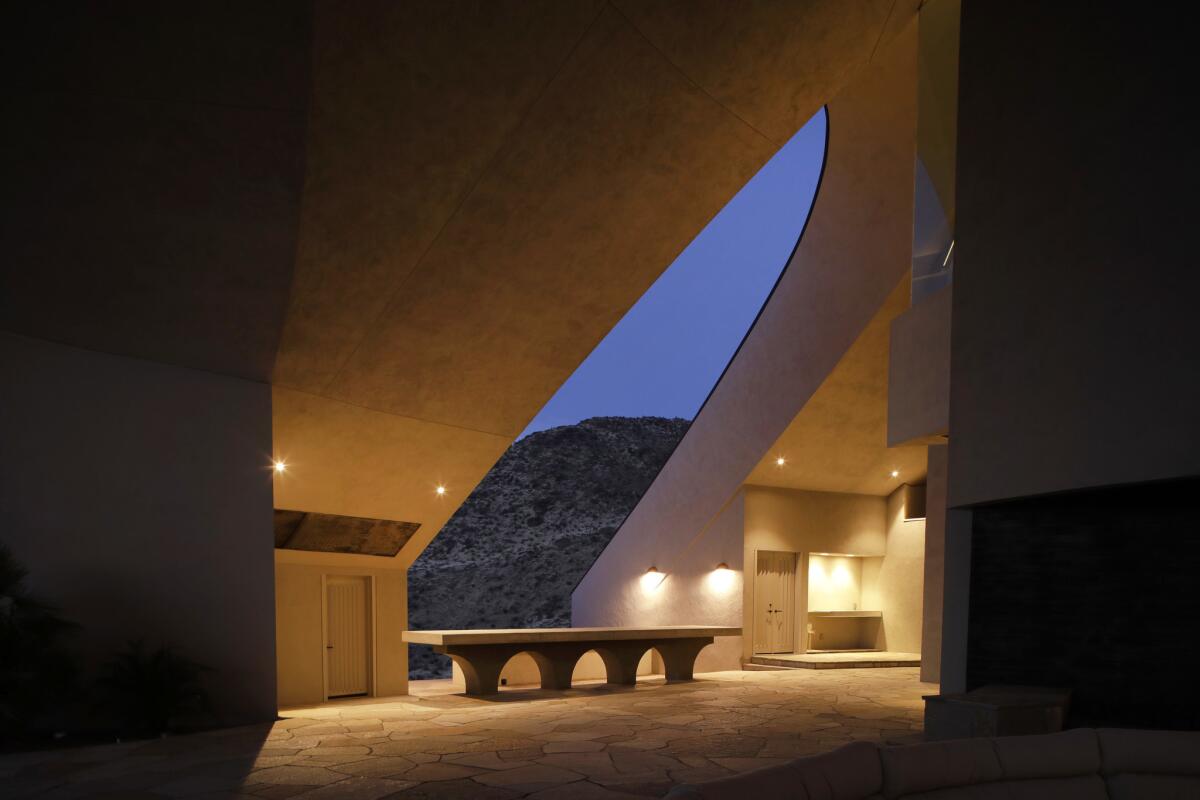
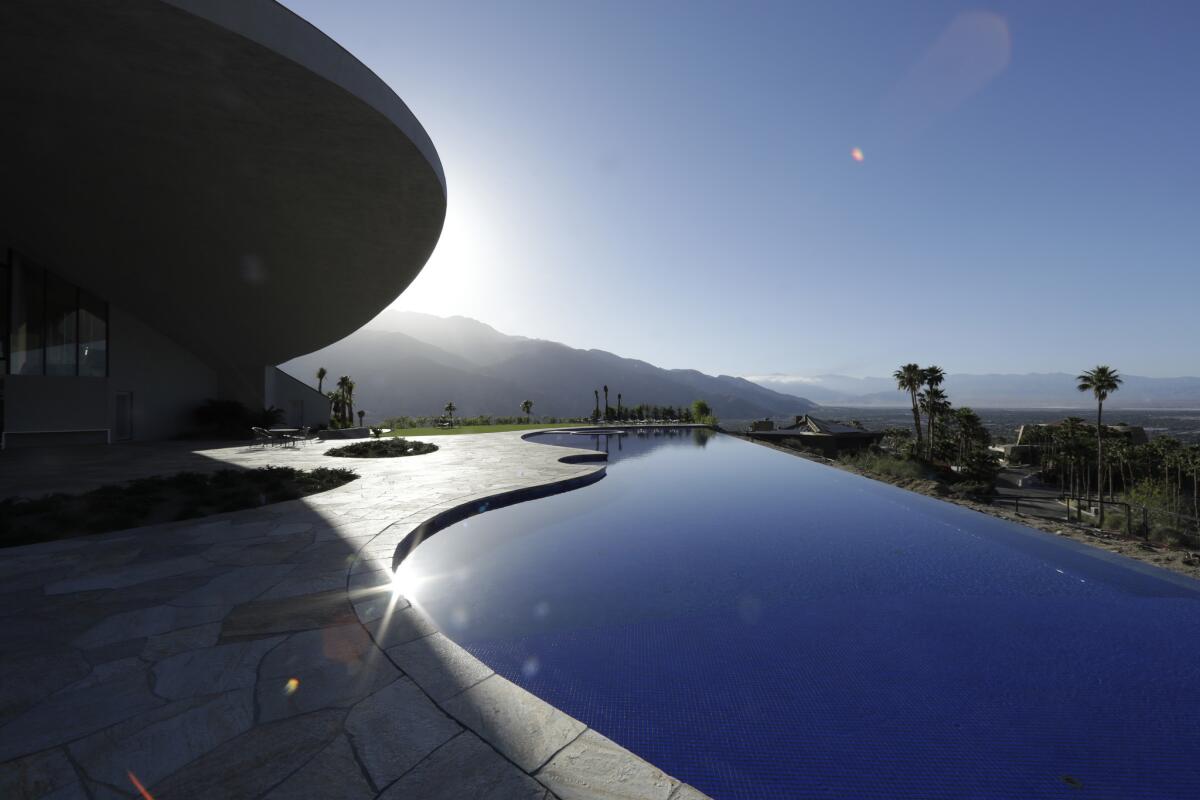
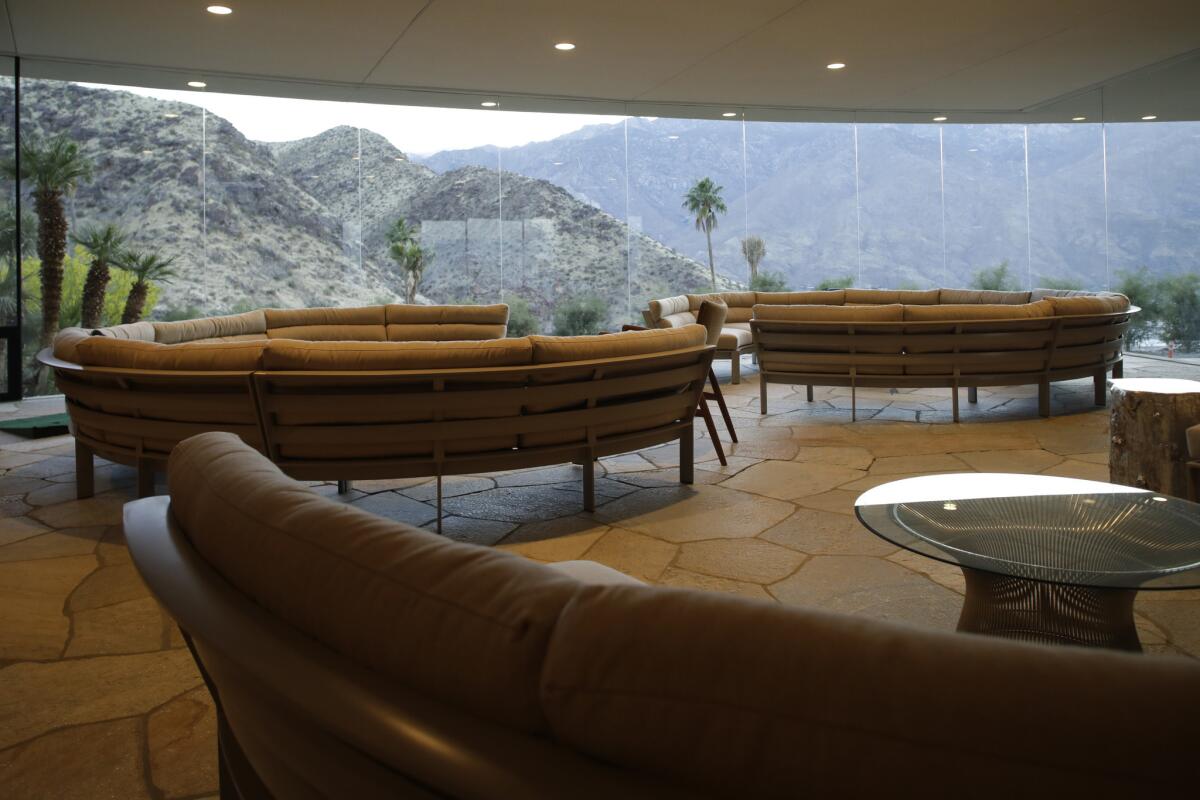
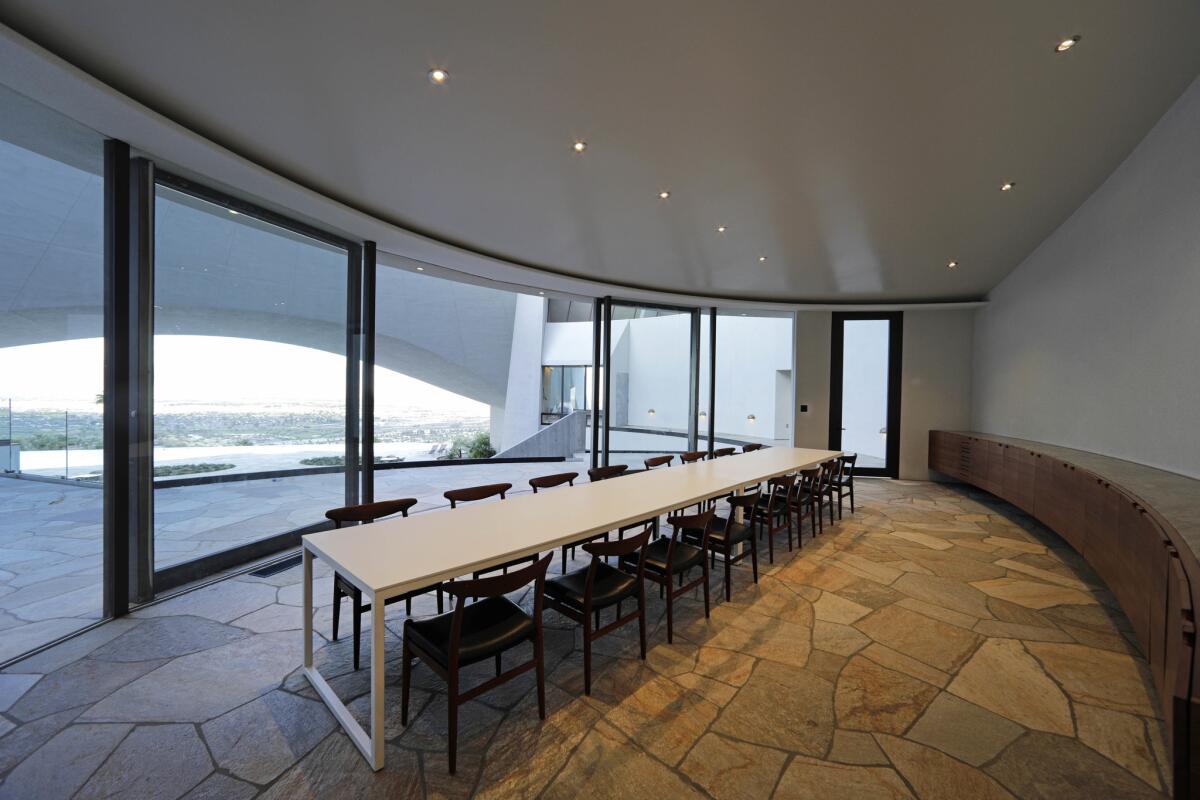
Ron Burkle grew up on the other side of the San Gorgonio Pass, in the Pomona Valley, and he remembers seeing the Hope house as a young man while working as the manager of a nearby Stater Bros. grocery store. (Burkle made his first fortune in the supermarket business.) He was astonished to see a home that was larger than his place of work.
Burkle already had an interest in architecture, an enthusiasm that started when he was a teenager, looking for a world beyond the confines of his life in a working-class community. He started to read books about famous architects, including Frank Lloyd Wright, and was captivated by photos of Wright’s Ennis house, the largest of the so-called textile block houses that the master built in Los Angeles.

At the age of 15, Burkle talked his father into driving him to see the Ennis house in Los Feliz for himself, and he slipped a note into the mailbox asking if he could come back to see the home’s interior. He was surprised when the owner responded with an invitation for a tour, and his dad took him back to the house on his day off.
Burkle’s passion for architectural masterpieces continued as his business empire grew and he acquired a number of important residences on two continents. He owned the Elrod house on Southridge for a while, and eventually purchased the Ennis house — for just under $4.5 million in 2011. Burkle and his team spent $13 million restoring the residence, with longtime aide Frank Quintero overseeing the last three years of the six-year renovation. Eventually, Burkle appointed Gleason as curator of the Ennis estate.
‘When I met with Helena for the first time, I had a great feeling about the potential for the house.’
— Ron Burkle on architect Helena Arahuete
After Dolores Hope died in 2011, at age 102, the Hope house went on the market for $50 million. Eventually, the price was dropped to $24,999,000 (a one-percenter’s notion, perhaps, of a half-price sale). With the Ennis restoration nearly finished, Gleason encouraged Burkle to meet with Arahuete — who had a strong following among Lautner fans — to discuss what it would take to restore the estate on Southridge Drive.
“When I met with Helena for the first time,” Burkle said, “I had a great feeling about the potential for the house. Helena’s office walls were filled with pictures of many of my favorite houses. Helena had a part in designing all of them with Lautner.”
Burkle quickly scrapped his plans to build a desert retreat at the ultra-exclusive Madison Club in La Quinta — where the Kardashian family has bought property — and in November 2016 put in an offer on the Hope house instead. His purchase price: $13 million.
He had the Lautner house and the Lautner disciple. It was time to plan the resurrection.
Arahuete started her career with Lautner in 1971 after immigrating to the U.S. from Argentina. After her mentor died in 1994, she went out on her own, designing homes from Alaska to Australia in the “organic modernism” style. She avoided going to Palm Springs “for many years.” But in 2013, two years after their mother’s death, the Hope children asked Arahuete if she would come to the desert for a consultation before they put their parents’ estate on the market.
As she drove into the city and looked at the Southridge Drive property, Arahuete was surprised to see that the roof had been changed again — it was covered in copper, glinting from the hills like a second sun. Within a year, the copper acquired a brown patina, and the house finally seemed to blend a bit with its surroundings.
Maybe there was hope for the house after all?
After Burkle purchased the property in 2016, he scheduled half a dozen meetings with Arahuete, at Gleason’s suggestion. After Burkle gave them the green light, Arahuete and Gleason went to work. They mined the Lautner archive at the Getty, where they unearthed all of his papers on the Hope house, including one of Elrod’s renderings for the home’s entertainment areas. They tore out the Hopes’ 1995 addition, and they reimagined the interiors, removing all decorative elements that did not fit with Lautner’s original vision. (The Hopes' swan-shaped Sherle Wagner bathroom fixtures were repurposed at the Hope estate in Toluca Lake, which Burkle bought for $15 million in June 2018.)
Gleason went to work designing and buying furniture, inspired by Elrod’s style, while Arahuete replaced the flooring with an iridescent patchwork pattern of gray quartzite, which catches the sunlight during the day and the glow of the house lights at night.
Following Lautner’s practice of using mahogany to add warmth to his modernist structures, Arahuete strategically paneled many of the walls with the reddish-brown wood. The wood also provided the “lighting troughs” for thousands of yards of LED tubing concealed inside the house. (The lighting technology, which Lautner could never have imaged 40 years ago, was also woven into the quartzite surfaces throughout the interior and exterior of the estate.) With the warm reflective colors in the mahogany and the iridescent mica in the quartzite floor, the Hope house now glows like a lantern at twilight.
Intrusive landscaping, put in place by the Hopes as a privacy measure, was removed — opening the views of the San Jacinto Mountains and Palm Springs’ famous windmills.
A seat by the new 140-foot-long infinity pool in the backyard may be the perfect place to watch the clouds move across the entire Coachella Valley.
It’s not easy renovating a giant round house with thousands of curves and few squares, but Burkle said, “I want the Hope house to continue to be something the Coachella Valley community is proud of.”
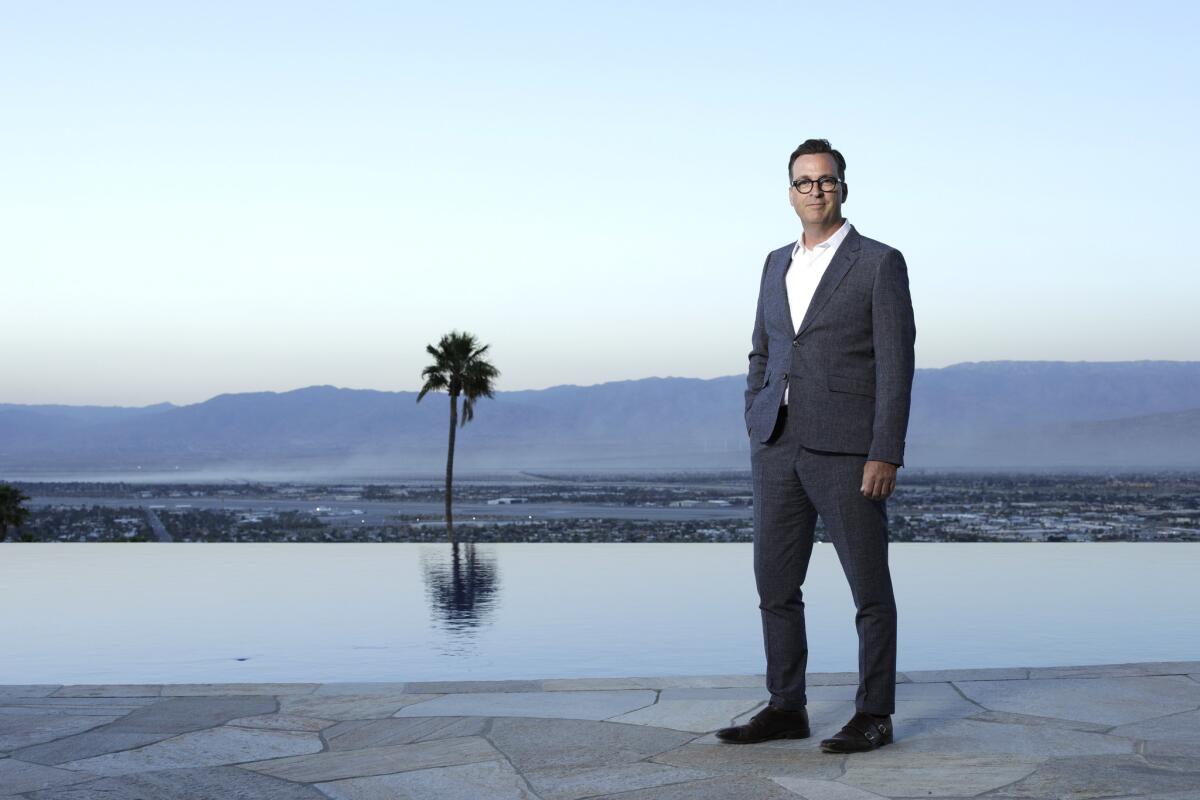
He also wants people to know that he has no patience with anyone who disrespects the Hopes — or the way they decorated their Palm Springs house.
They could have abandoned the project. They could have hired a more conservative architect. They didn’t.
“They were leaders in philanthropy and in the support of our troops all over the world,” Burkle said. They were a huge part of the Palm Springs community and its history.”
The Hopes envisioned the house as a space for entertaining and bringing people together, Burkle said, adding, “I expect to use the house in a similar way.”
During a recent reception at the Soho house in West Hollywood (another one of Burkle’s properties), the billionaire was asked how many homes he owns. He smiled and shrugged.
His official residence is in Montana these days, but he has a place in New York, a beach house in La Jolla and a townhouse in London. He also owns the Greenacres estate in Beverly Hills, where he has hosted scores of events over the years, always with a long list of notables in attendance.
Burkle believes in opening up his homes to groups he supports for charity fundraisers, political gatherings and receptions, and when the current renovation is complete, the Palm Springs house — which includes a music room, game room and a home theater with a rare Samsung screen — will be ready to play the same role.

The renovation of the Hope estate was supposed to be done in time for the first Coachella weekend in April (Burkle has been attending the annual music festival for years.) But a rainy winter wreaked havoc with the timetable and made Arahuete's commute from the Westside to the resort town an exercise in navigating gridlock.
Despite the delays, Lautner’s vision is already apparent.
“Architecture is art,” said Arahuete. “You see a painting or a mural in two dimensions on a wall. A sculpture — you can walk around and see it from different angles.
“But good architecture is almost like you're inside of the sculpture and the art is around you, and the way you frame the views — if you're lucky enough to be able to design in an area that has beautiful views — then the views become like the permanent work of art that's constantly changing with the seasons and the light of the day.”
Daunt is a special correspondent.
The biggest entertainment stories
Get our big stories about Hollywood, film, television, music, arts, culture and more right in your inbox as soon as they publish.
You may occasionally receive promotional content from the Los Angeles Times.







